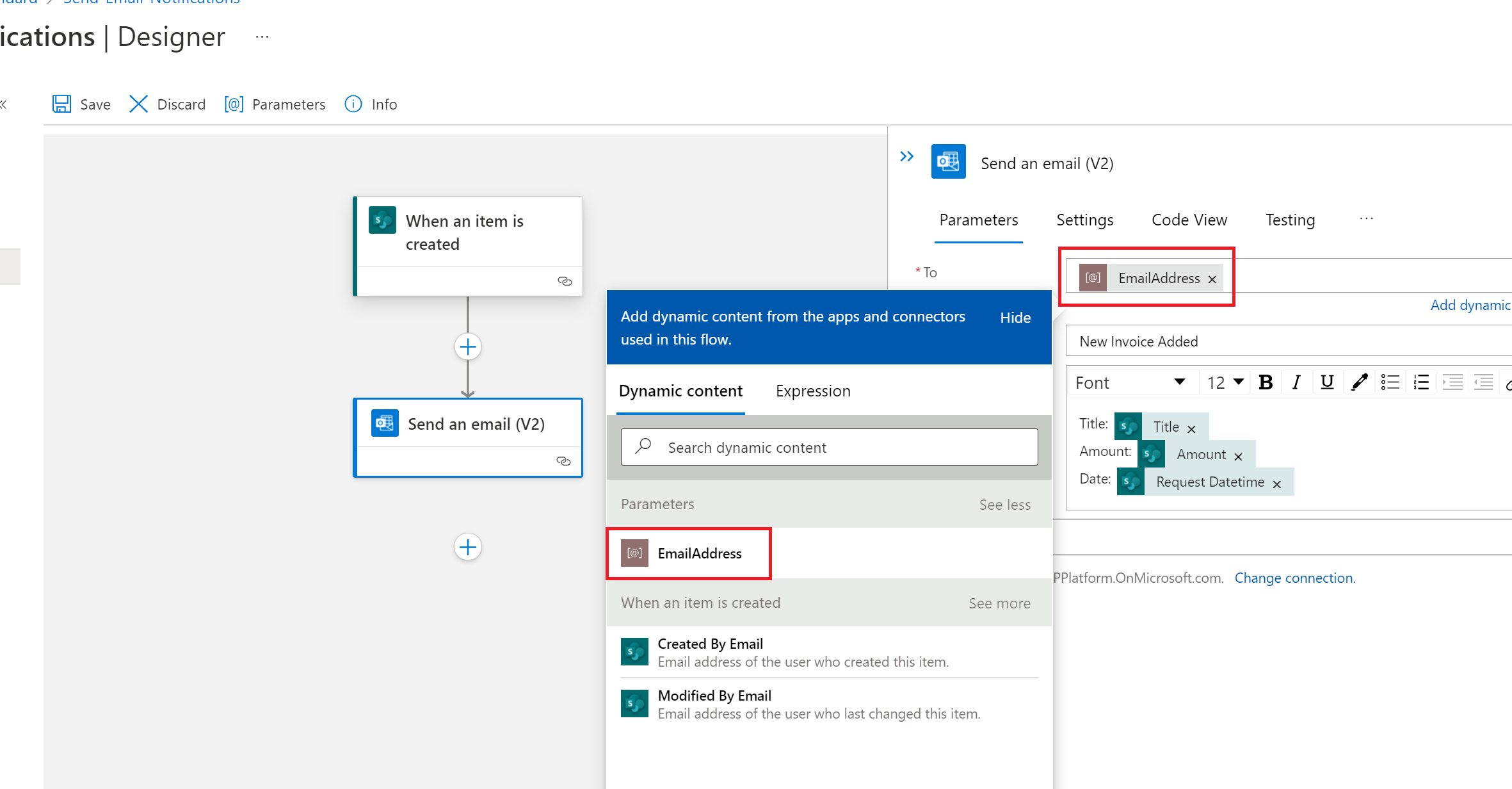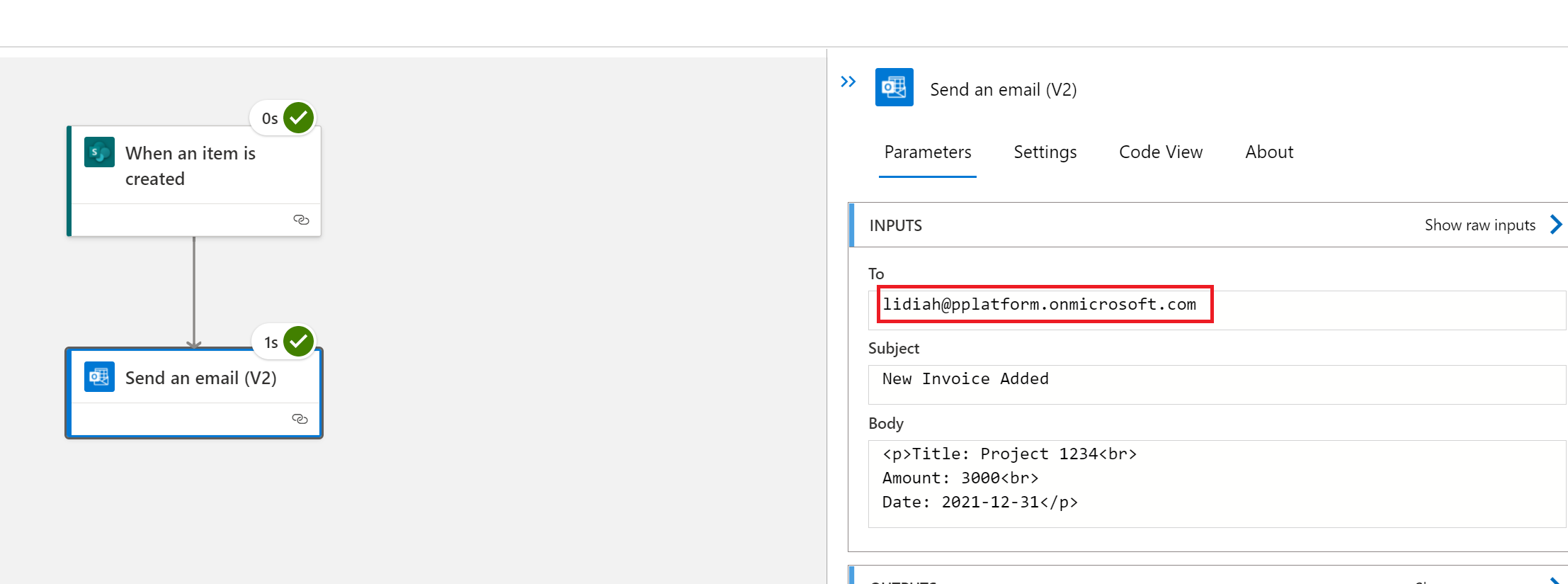- Print
- DarkLight
- PDF
Using Parameters in Azure Logic Apps Standard (Portal)
- Print
- DarkLight
- PDF
In this post, we are going to discuss how we can use parameters in Azure Logic Apps (Standard) to allow for our configuration values to become more portable. In this scenario, we will focus on how we can do this in the Azure Portal. In a future post, we will demonstrate how we can do something similar using VS Code.
Parameters allow us to inject configuration values from outside of our core workflow logic. This allows us to deal with different environment specific configuration data. In this post, we will make an email address configurable, but this approach is also applicable to other configuration items like URLs, folder GUIDs or anything else that needs to be changed between environments.
To start with, let’s create a working logic app. In my case, it is a stateful Azure Logic App (Standard). However, this approach will also work with stateless logic app workflows. In addition, when we create a parameter it is available to other workflows within our Logic App (Standard) instance.
Build and test your logic app using the correct hard-coded configuration values.

With our logic app built and tested, we can now create a parameter by clicking on the [@] Parameters link. From there, we can click on Create parameter and provide a Name, Type and Value.

We now need to go update our logic app configuration and will update the Send an email (V2) action to use our EmailAddress parameter that is available from our Dynamic content. We can now save our logic app.

Testing
When we go to run our logic app again, we will discover that our value from our parameter is injected into the action at runtime.

Conclusion
Parameters are a useful capability to ensure your logic apps can be moved from one environment to another without the need to change the core configuration of the logic app. This reduces the need for elevated access by operations people and helps prevent situations where people make an “oops” in production.


